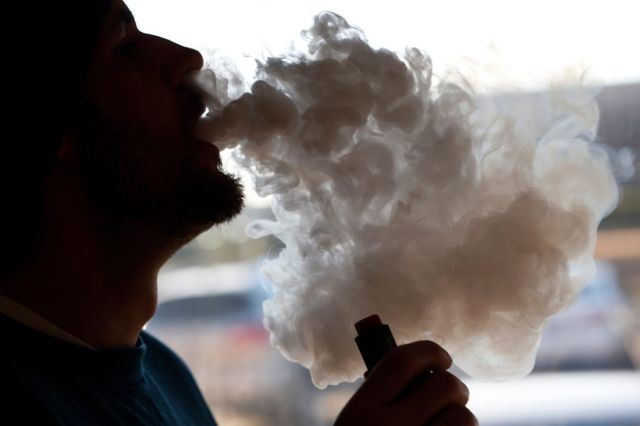Vaping Contains 10 Times As Many Cancer Chemicals As Cigarettes (Video)
by N.Morgan

Vaping or E-cigarettes have been found to contain 10 times the level of cancer-causing agents as regular tobacco, Japanese scientists said Thursday, the latest blow to an invention once heralded as less harmful than smoking.
The electronic devices — increasingly popular around the world, particularly among young people — function by heating flavored liquid, which often contains nicotine, into a vapor that is inhaled, much like traditional cigarettes but without the smoke.
Researchers commissioned by Japan’s Health Ministry found carcinogens such as formaldehyde and acetaldehyde in the vapor produced by several types of e-cigarette liquid, a health ministry official told AFP.
Formaldehyde – a substance found in building materials and embalming fluids — was present at much higher levels than carcinogens found in the smoke from regular cigarettes, the official said.
“In one brand of e-cigarette the team found more than 10 times the level of carcinogens contained in one regular cigarette,” said researcher Naoki Kunugita, adding that the amount of formaldehyde detected varied through the course of analysis.
“Especially when the… wire (which vaporizes the liquid) gets overheated, higher amounts of those harmful substances seemed to be produced.”
Kunugita and his team at the National Institute of Public Health submitted their report to the ministry on Thursday.
In common with many jurisdictions, Japan does not regulate non-nicotine e-cigarettes.
Nicotine e-cigarettes, or so-called Electronic Nicotine Delivery System (ENDS), are subjected to the country’s pharmaceutical laws, but they can be bought easily on the Internet, although they are not readily available in shops as they are in some Western countries.
“You call them e-cigarettes, but they are products totally different from regular tobacco,” the ministry official said.
“The government is now studying the possible risks associated with them, with a view to looking at how they should be regulated.“
‘Serious Threat’
In August, the World Health Organisation called on governments to ban the sale of e-cigarettes to minors, warning they pose a “serious threat” to unborn babies and young people.
Despite scant research on their effects, the WHO said there was enough evidence “to caution children and adolescents, pregnant women, and women of reproductive age” about e-cigarette use, due to the “potential for fetal and adolescent nicotine exposure (having) long-term consequences for brain development”.
The UN health body also said they should be banned from indoor public spaces.
US health authorities said earlier this year that the number of young people there who have tried e-cigarettes tripled from 2011 to 2013.
More than a quarter of a million young people who had never smoked a cigarette used e-cigarettes last year, the US Centers for Disease Control and Prevention said.
Supporters of e-cigarettes say the devices are a safer alternative to traditional tobacco, whose bouquet of toxic chemicals and gases can cause cancer, heart disease and strokes and are among the leading causes of death in many countries.
But opponents say the devices have only been around for a few years, and the long-term health impact from inhaling their industrial vapor is unclear.
Big tobacco companies are snapping up producers of e-cigarettes, wary of missing out on a snowballing global market worth about $3 billion.
Earlier this month, Oxford Dictionaries picked “vape”– the act of smoking an e-cigarette — as their new word of the year.
We have an affiliate program designed for content creators and affiliate marketers, who would like to sell this product, please click here for affiliate program details. Our affiliate program is designed to help you monetize your screen time.

References:
.png)
Comments
Post a Comment